Tamang Heritage Trail (I), Langtang National Park – Nepal
Tamang Heritage Trail, Langtang (part I)
Starting the Tamang Heritage Trail. My mountain guide-cum-porter, Rishi, accompanied me from the luxury of Kopan Monastery to Matribhimi Hotel (his uncle’s hotel). The hotel was a dirty and ugly place but close to the Gongabu Bus Station (on Kathmandu’s Ring Road). From there, we would easier leave toward the town of Syabru Besi, situated high in the mountains. We had lunch at an eatery nearby, where I paid, and Rishi was surprised to see my boyfriend’s photo on my phone. In the evening, I sat in the hotel’s dining room and took down my notes from Kopan Monastery.
The following day, we went to the bus station, which was a mix of buses, people, animals, and peddlers. Rishi had forgotten the bus tickets at home but he somehow agreed with the bus driver to let us on the bus. The bus was called “deluxe.” It even had sockets and a TV display running Indian hits, but otherwise, it was a jalopy. It ran with the door open and, at a bend of the road, my small backpack (with money!) flew directly out through the open door. Rishi flew after it immediately and brought it back to me.
For most of our trip, the bus followed serpentine dusty roads, with lots of bumps. The bus helper had his seat at the front of the bus between the lines. When the road narrowed, he got off the bus and guided the driver. One knock on the door meant ‘Stop!’ and a couple of knocks meant ‘Continue! You can move on.’
Our bus trip from Kathmandu to the small town of Syabru Besi lasted 9 hours (for ~ 200 km). We had a lunch break in Kalika Sthan and stopped for several checks at the entrance of Langtang National Park. The police had to check my passport, my trekking permits, and even my luggage. Rishi also filled out a form in a big notebook and declared he would take care of me during the trek. In Syabru Besi, we stayed at Yala Peak Guesthouse, down the main street. My room on the top floor was basic and dirty but had hot running water. Especially relevant, food prices suddenly doubled compared to the ones in Kathmandu.
The Tamang Heritage Trail was a less popular trek in Nepal but close to the famous and crowded Langtang Valley. The trek lasted between five to seven days (if an optional visit to the Tibetan border was included). The trail went through Tamang villages, including villages where Tibetan refugees lived. These villages were very alive, despite their limited accessibility (only by motorbike, horses, or walking). The trek was set up as a community-based project to improve local agricultural life through tourism.
Tamang Heritage Trail, the first day of the trek
Short Description: We started the ascent from the small town of Syabru Besi. Then, we steeply went up to Bahun Danda Pass. From there, we walked along a dirt road overlooking the Goljung Valley and finally went down along a contour line to Gotlang village.
Long Description.
I gave my sleeping bag and a few clothes to Rishi to carry. As a result, I only carried a small backpack with my water camel-bag and a photo camera. From Syabru Besi, we followed a steep footpath starting a few houses away from the guesthouse where we had stayed overnight.
After we left behind Syabru Besi (1467m altitude), the path turned into steep stone steps and passed through mustard and buckwheat fields. Two local boys, Rohan and Nima, joined us for the first part of our hike up to Bahun Danda Pass, and they even asked me which caste I belonged to.
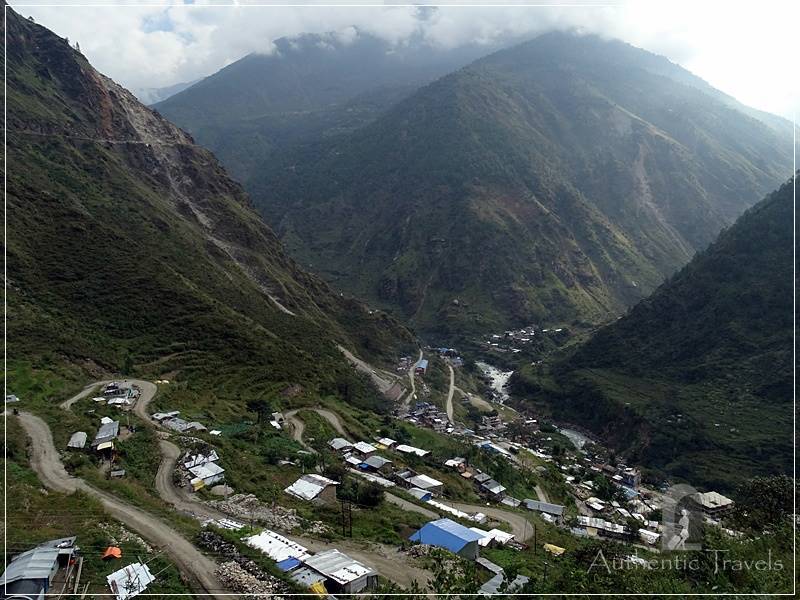
Tamang Heritage Trail – Day 1: Going up to Bahun Danda Pass – view of Syabru Besi. The valley on the right is the famous Langtang Valley
At noon, we stopped at Bahun Danda Pass (2100 m altitude), at Golgung Danda Chhangang Lodge, where we enjoyed the Nepalese traditional dish – dhal bhat (rice with vegetables and spicy sauce). I quickly climbed to Tsamkhang Stupa, where a lama and a group of local Tamang women recited mantras.
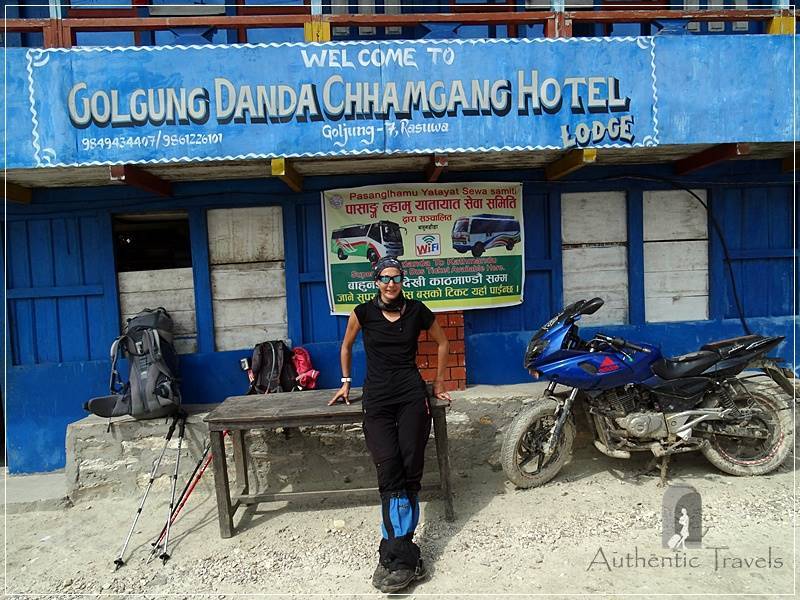
Tamang Heritage Trail – Day 1: Bahun Danda Pass (2100 m alt.) – lunch break at Golgung Danda Chhangang teahouse
After lunch, we followed a dirt road passing above the Goljung Valley and then descended to Gotlang village (2238 m altitude), where we found a good local lodge, Gotlang Guesthouse & Homestay.
The dining room of the guesthouse had painted Nepali scenes with red panda, snow leopard, or snowy mountains. Before dinner, I tasted the Sherpa tea or suchia (melted yak butter, salt, yak milk, and Nepali tea).
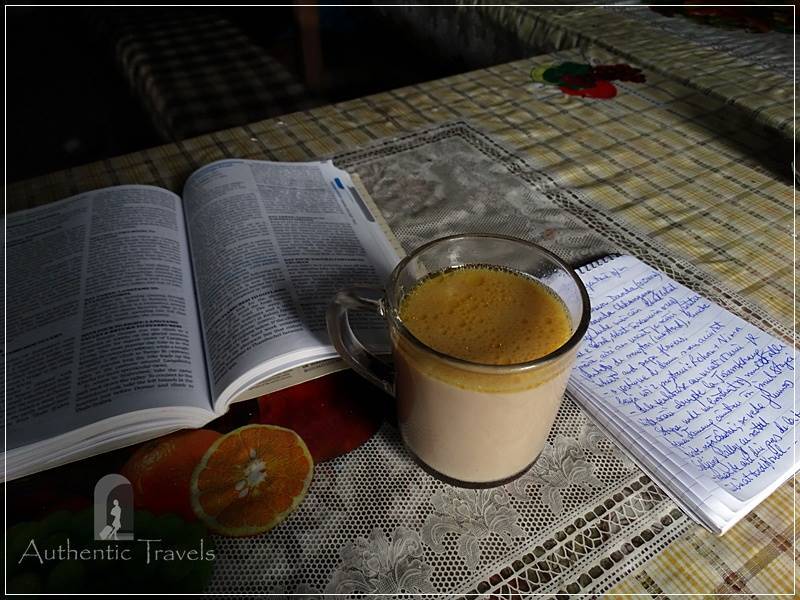
Tamang Heritage Trail – Day 1: Gotlang village – Gotlang Guesthouse & Homestay. Serving Sherpa tea or suchia (melted yak butter, salt, yak milk, and Nepali tea)
Later, four Frenchmen came to stay at the guesthouse, too. The small dining room quickly filled up with people. For dinner, we had a local dish called dhendo (mashed maize flour with vegetables and spicy sauce).
Tamang Heritage Trail, the second day of the trek
Short Description: We descended from Gotlang village along the Bamdang Khola Valley. When we reached Chilime village, we crossed the river and then steeply hiked to Cherka hamlet and Gonggang village. We ended our trekking day in Tatopani village (which means “hot water” in Nepali).
Long Description.
In the morning, there was 10 degrees Celsius in the room where I slept. For breakfast, I had an omelet with chapati (flat local bread) and went out for a walk through Gotlang village. Gotlang was a picturesque village with houses featuring wooden shutters with carved, colorful Tibetan decorations.
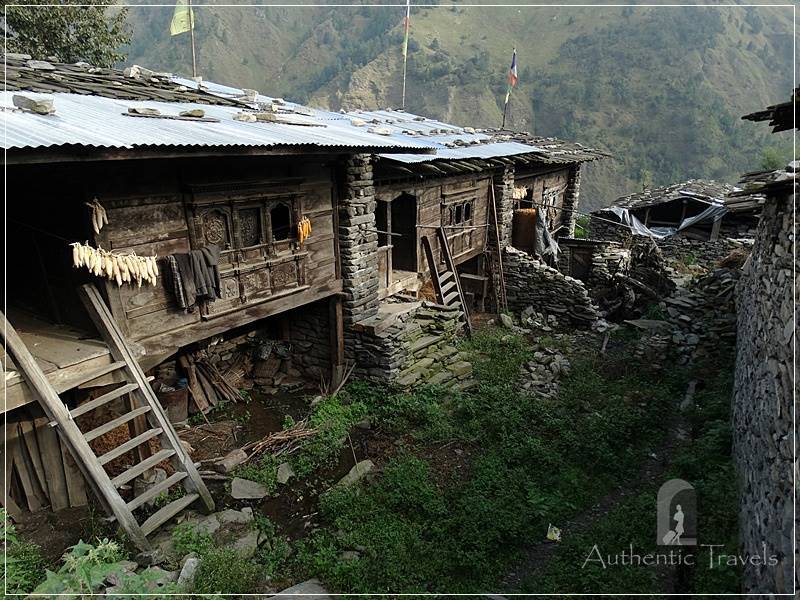
Tamang Heritage Trail – Day 2: Gotlang village – traditional houses of stone, carved wood, and slates
A line of chortens started from the center of the village and continued along the trail for a while. A chorten is a pyramidal construction of stones with written mantras on them. It usually belongs to one family and is built in memory of the dead.
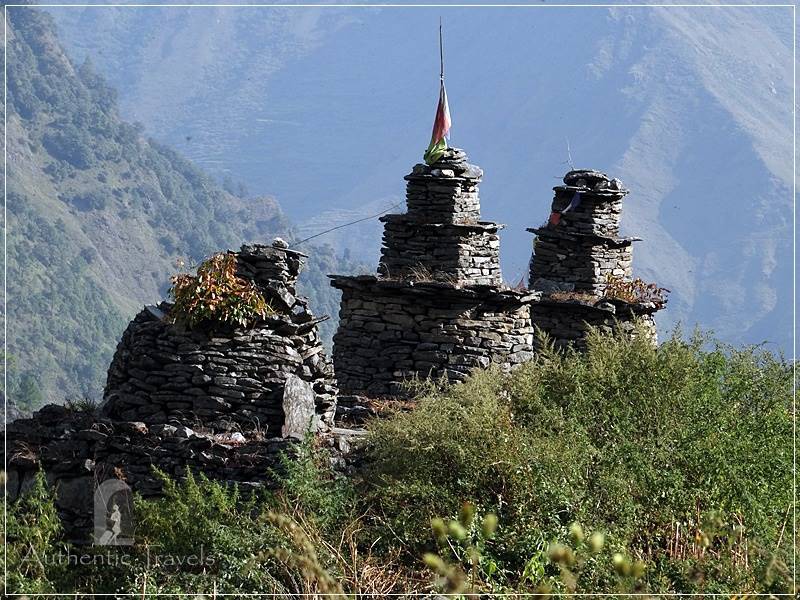
Tamang Heritage Trail – Day 2: Heading toward the Bamdang Khola Valley while trekking along a line of chortens
When we left Gotlang village, we followed the line of chortens toward the Bamdang Khola Valley. In a courtyard, a woman winnowed the millet and, in another courtyard, a Tibetan woman wore a traditional hat (syadi), an apron at her back (guni), and big round earrings of mixed metal.
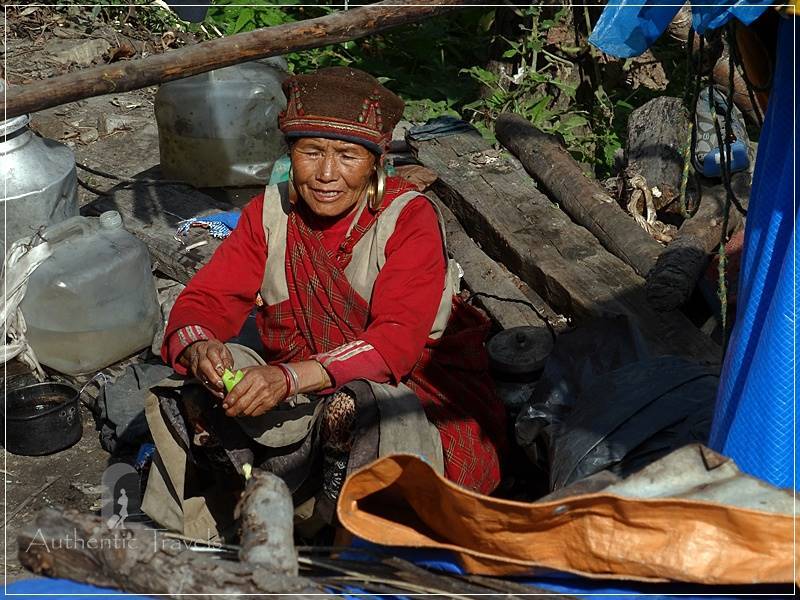
Tamang Heritage Trail – Day 2: Heading toward the Bamdang Khola Valley – local woman at work in the household
When the Bamdang Khola Valley narrowed, we followed a path paved with stone steps and descended close to Chilime village (1762m altitude). As we approached the junction with the Chilime Valley, we passed other chortens and walls of stone with carved and painted mantras. On the right, we could see Goljung village and Bahun Danda Pass, where we had been the previous day. Ahead, far above the clouds, the lofty Langtang peak (over 7000 meters high) appeared out of the clouds for a few minutes.
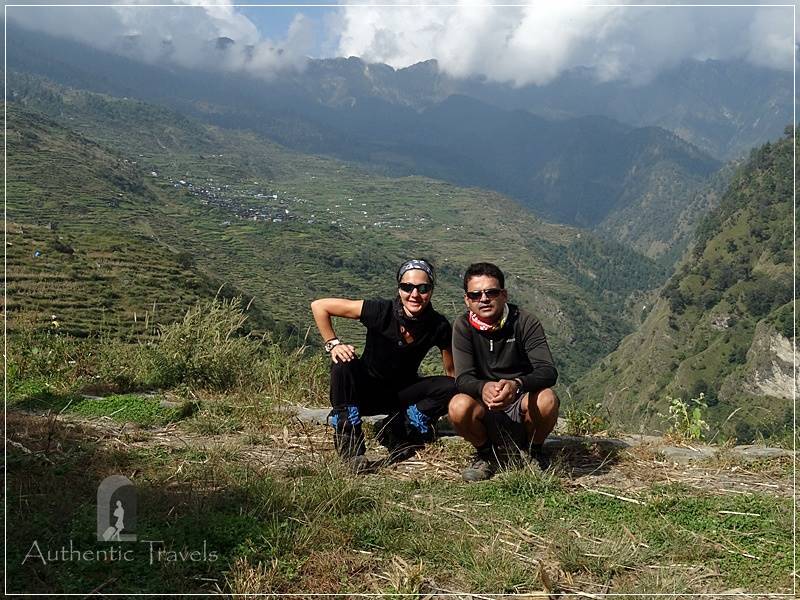
Tamang Heritage Trail – Day 2: Heading toward the Bamdang Khola Valley (with my guide-cum-porter Rishi)
We crossed the Chilime River on a suspension bridge and started a long and exhausting hike (860 m difference of altitude) toward Tatopani village. On our way to Cherka hamlet, we met a Nepali man who had been working in Malaysia for the past thirteen years. He was coming back home to his wife and child, who lived in Gonggang village. The man carried only a bag on his shoulder and was happy to have someone to talk to on the way up to his village. He didn’t seem to hurry and we left him behind when he met another Nepali man he had known beforehand.
We quickly reached Cherka hamlet (2038m altitude) and stopped there for lunch, at Cherka Hotel & Waterfall Viewpoint. While I was eating potatoes with vegetables and eggs, the three children of the host happily gathered around me. A few drops of rain started to fall outside, and I could hear the rain on the roof of the house.
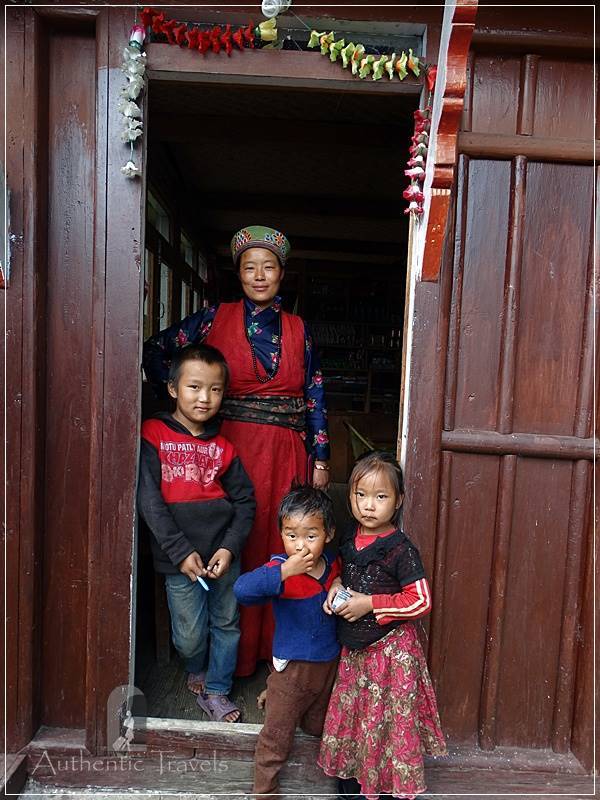
Tamang Heritage Trail – Day 2: Cherka hamlet – a woman with her children at Cherka Hotel & Waterfall Viewpoint
From Cherka hamlet, we continued the exhausting ascent to Gonggang village (2227m altitude). We passed among traditional households and plots of agricultural land situated on steep terraces.
After we passed Gonggang village, we walked along a contour line constantly climbing to Tatopani village (2607m altitude). Tatopani means ‘hot water’ in Nepali and there had been hot springs in the village for many years. The 2015 earthquake damaged the hot springs, though, and only the empty pools remained.
In Tatopani village, we stayed overnight at Eco Guesthouse, where other two Americans (Matt and Heather) were staying, too. They were very glad to see their first tourist in two days – me. We didn’t have a shower or WIFI at the guesthouse as we had read on their visit cards. Nevertheless, there was a stove with a wood fire in the dining room. In the evening, I ate again dhendo and chicken balls to regain my physical condition after two long trekking days.
Tamang Heritage Trail, the third day of the trek
Short Description: We went from Tatopani village to Brimdang hamlet and then continued the ascent to Nagthali Ghyang.
Long Description.
The porridge (tsumpa) with only one spoon of muesli was not enough for my breakfast after two trekking days. Rishi told me I had to pay anything extra ordered. In the morning, I walked through Tatopani village, which was a mini-resort with half of its houses transformed into lodges for trekkers. I saw the former pools for thermal water, abandoned in decay after the 2015 earthquake. However, the children in the village seemed happy and greeted me with the traditional ‘Namaste’.
When I returned to the guesthouse, Rishi was ready to go and wanted to reach Thuman village the same day (6-8 hours of hiking for the third consecutive day).
We left Tatopani village and went up toward Brimdang hamlet. I was very tired after the previous two trekking days. However, the picturesque subtropical forest with climbing plants revitalized me for a while. Sometimes the path went down, even though we had to reach 3000 meters of altitude. In the background of the Sanjen Khola Valley, I could see the lofty Ganesh Himal peak over 7000 meters high.
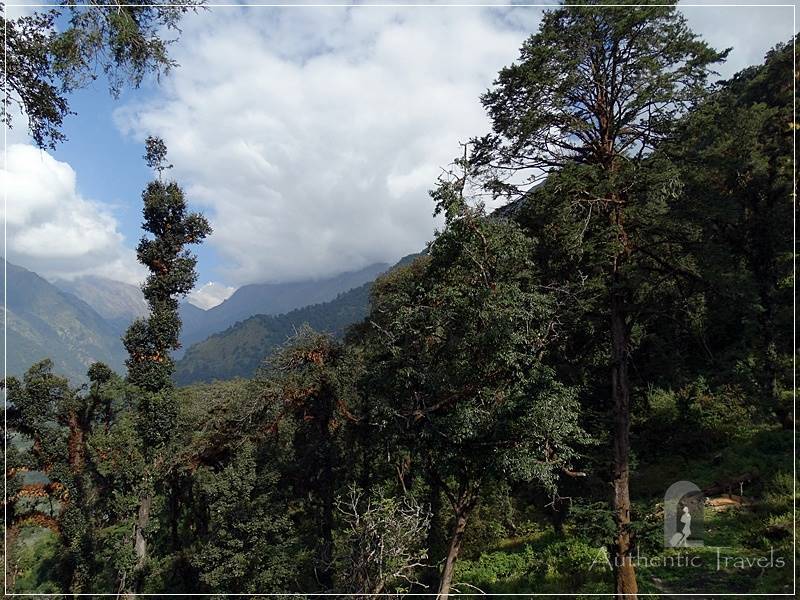
Tamang Heritage Trail – Day 3: Passing through a subtropical forest with climbing plants (Ganesh Himal peak in the background)
We reached Brimdang hamlet (2848m altitude) with a few dilapidated houses and an abandoned gompa (monastery). There, I entered inside a small cottage, where a woman was cooking nettle sauce for dhal bhat. The household where she lived with her husband had a garden with vegetables, a small bridge leading to a natural stream, and a store for dried corncobs.
The path from Brimdang hamlet to Nagthali Ghyang went up gently most of the way, but we climbed steeply when we almost reached 3000 meters. When the fog came up from the valley below us, I realized I wouldn’t be able to see the view of the Langtang Range. Therefore, I asked Rishi to put off the descend to Thuman village for the following day and stay in Nagthaly Ghyang (3165m altitude) overnight.
We checked in at Nagthali Great Wall Lodge, where the ‘not enough food’ story repeated. The spaghetti had a teaspoon of tuna with tomato sauce and only a bit of yak cheese. As a result, I was scolded when I asked for extra topping. I created a scandal, solved the problem, and received more topping for my spaghetti. To make sure I wouldn’t get hungry again until dinner, I also had to order pancakes with a few slices of apple.
In the afternoon, I walked around Nagthali Ghyang and found the two Americans sitting on a sleeping pad. They were waiting for the view of the Langtang Range to appear from the clouds. I sat next to them and we froze together for a while. After that, I went down to my guesthouse, where an old woman asked me for food. I ignored her and kept watching the clouds moving up and down while I was sipping hot lemon tea, kept warm in a thermos. As I sat there, I hoped the mountains would come out of the clouds (which actually happened but just for a couple of minutes).
In the evening, the four Frenchmen who had stayed with us in Gotlang village caught up with us and checked in at the same lodge where we stayed. When they arrived, the owner of the guesthouse (a lama) started to cut firewood. For dinner, I had potato momos and pancakes with yak cheese again. Finally, I wasn’t hungry anymore. When we ran out of firewood in the dining room, the lama sent us upstairs to our rooms. The rooms weren’t warmer either, but at least we had good blankets and sleeping bags.
Tamang Heritage Trail (part I) is the first travelogue about trekking in Langtang National Park, Nepal. You can find the version in Romanian at ‘Tamang Heritage Trail, Parcul National Langtang, Nepal‘. The continuation of this travelogue can be found at the following link Tamang Heritage Trail (part II). And here are all the Travelogues from Nepal (x12).
Have you been trekking into the Himalayas or plan to go there? Leave a comment below this post and tell me what you liked in Nepal or what you want to see there.
Want to subscribe to my travelogues? Just leave your email in the subscription form below, and you’ll be notified when I publish a new post.
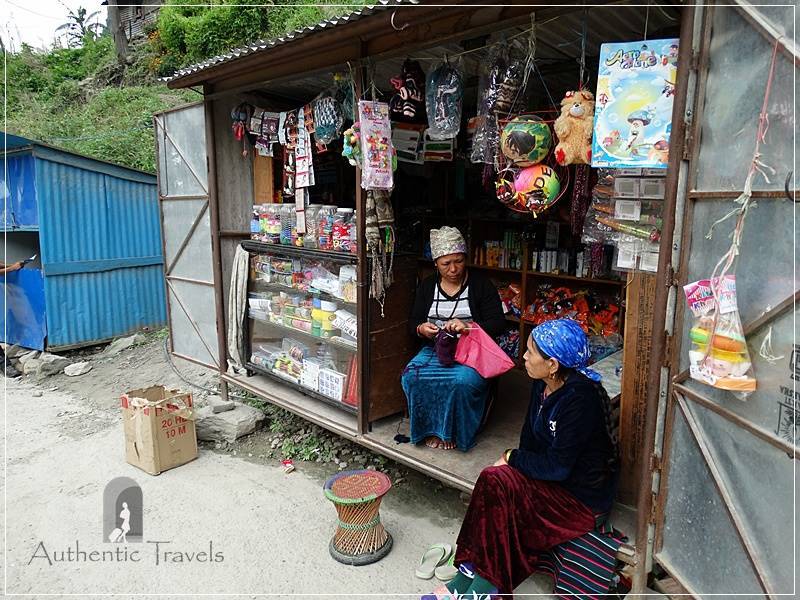

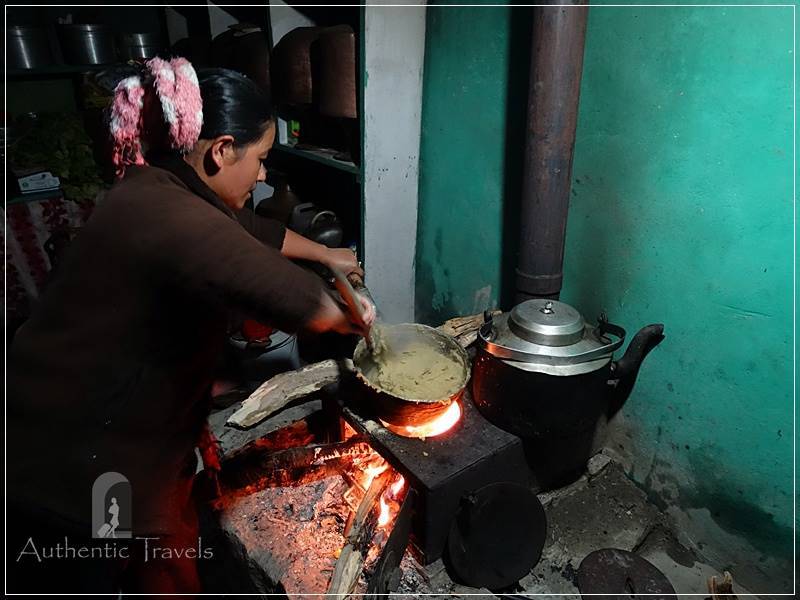
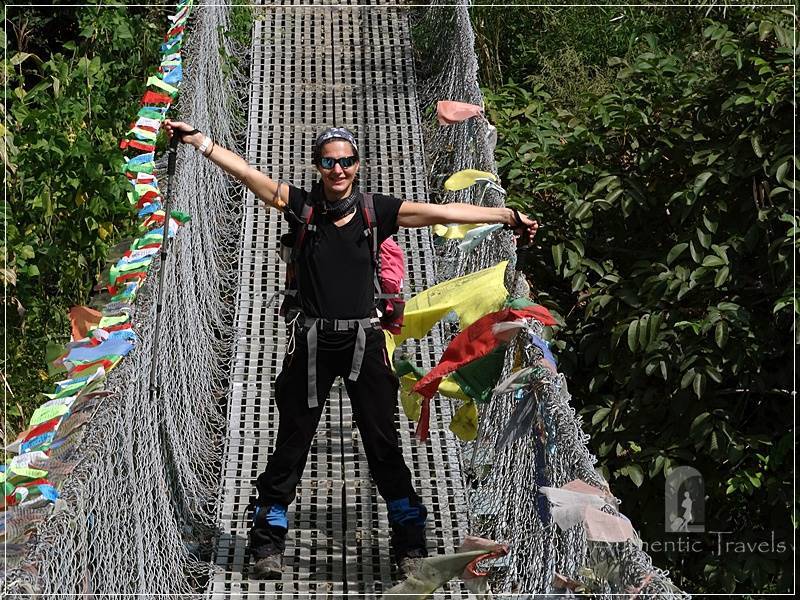
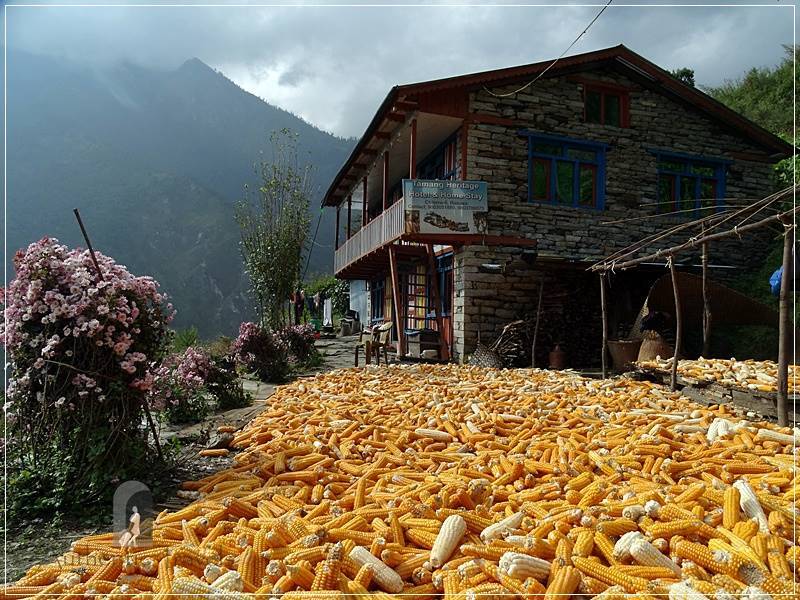
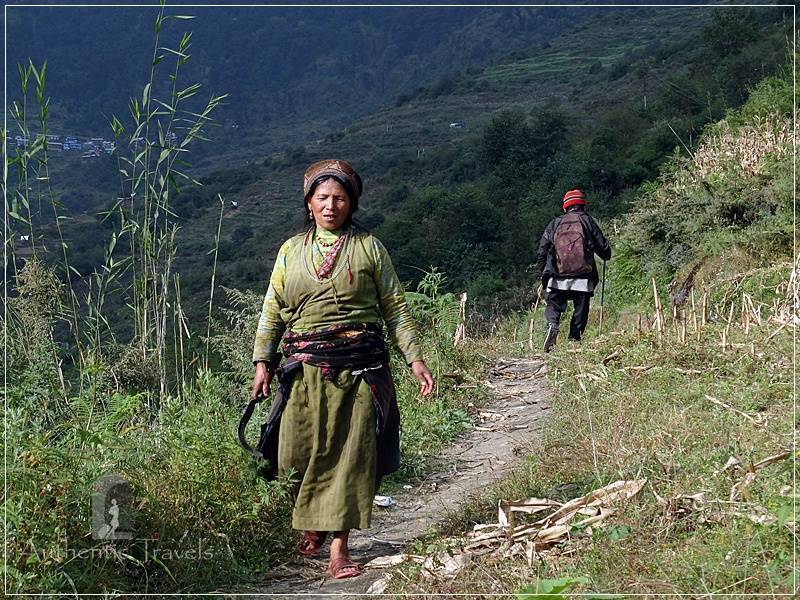
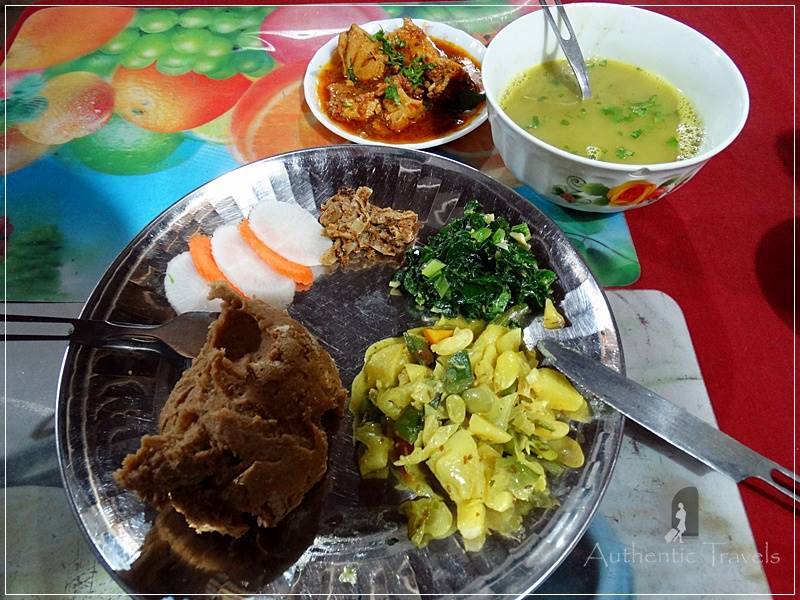
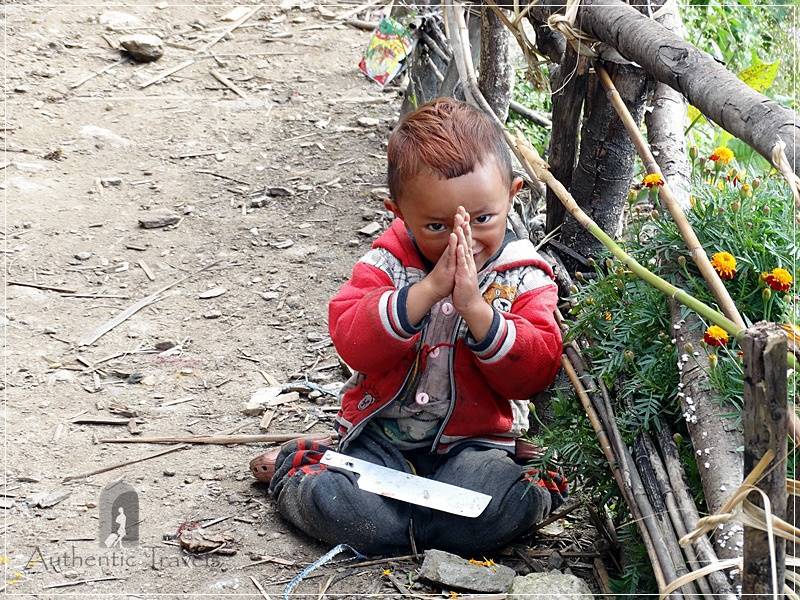
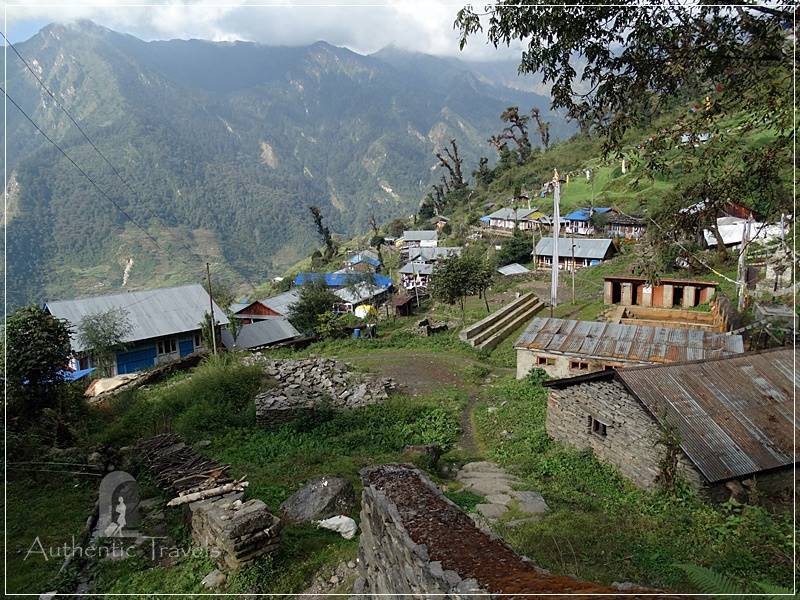
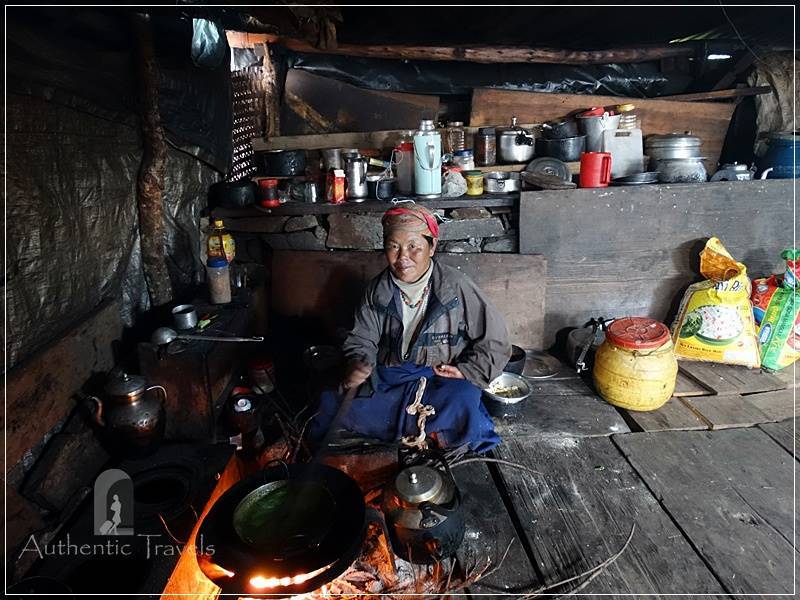
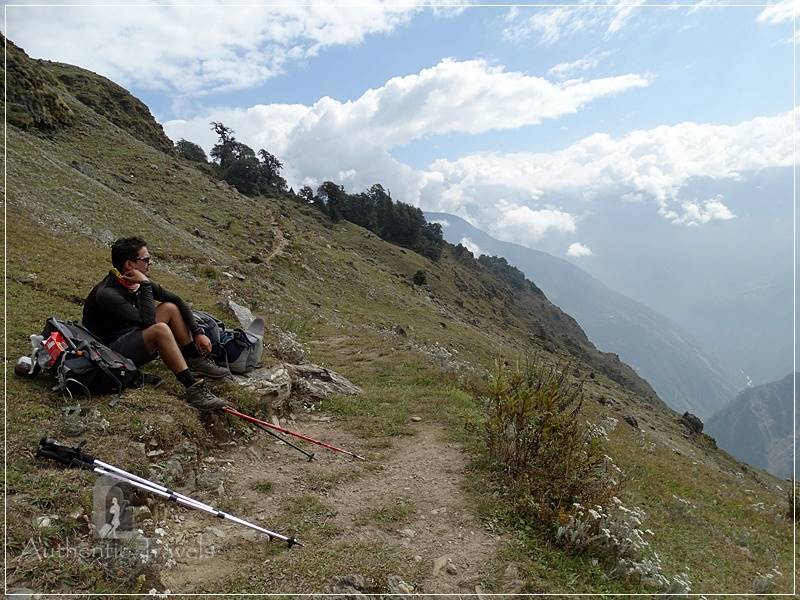
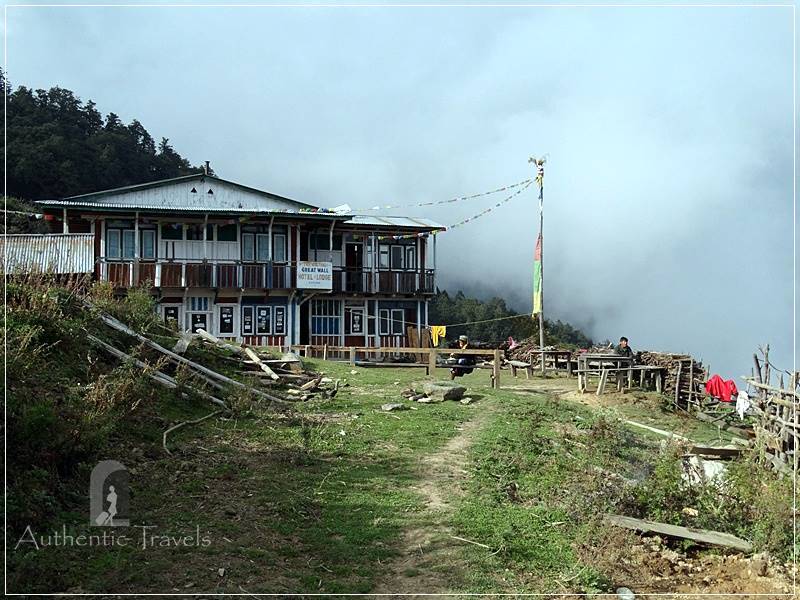
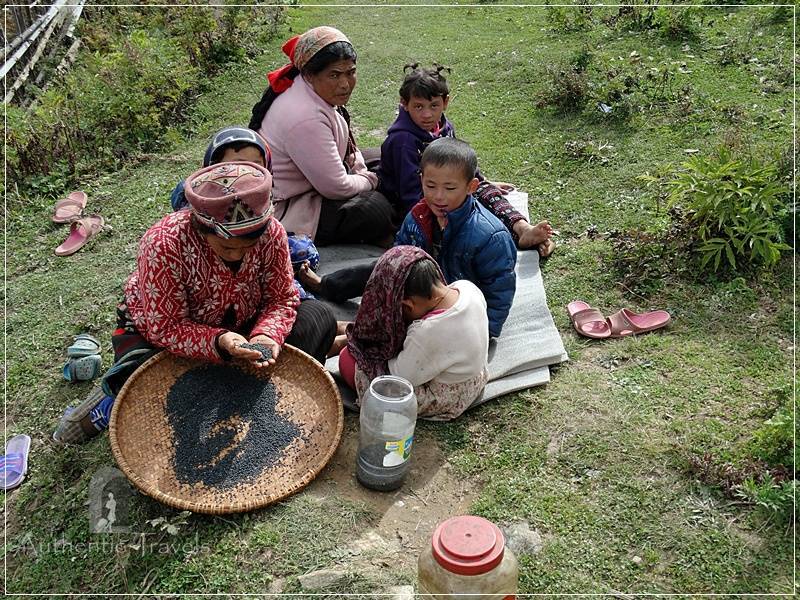
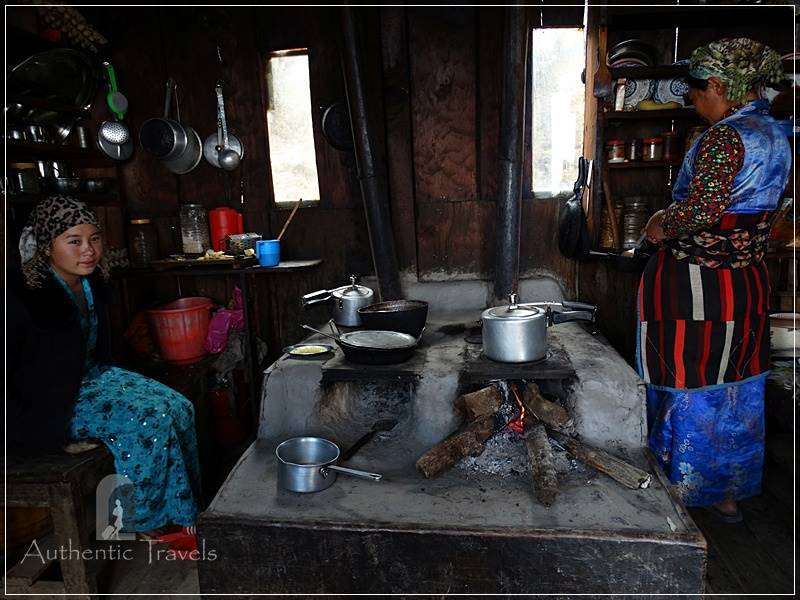
great photos i can see some of them being a postal card: Have fun exploring
I have begun to admire your posts a lot. Your choices of places to travel to is off beat! The trek you had through the villages must have given you some incredible experiences. There is nothing better than exploring a place the local way. The settlements nestled in nature is incredible. You have given me some huge travel goals.
I am happy that I challenged you. I also follow your blog and I like the places you post about a lot. 🙂
This trek seems great, we are going to Kathmandu in 2 weeks. We have an organized trek and some activities to do but this is not on the list. We have a few extra days before we have to leave and perhaps we can fit this in!
Normally, this trek lasts 5 days if you walk every day at least 6 h; otherwise, you can do just a small loop of it, the first 3 day or the last 2 one. However, take in mind that you’ll need another trekking permits.
This sounds like a great and super authentic experience. I would have loved to try the Sherpa Tea & dhendo – it sounds so interesting. So lovely as well that you got to see local village ladies cooking and preparing traditional style meals. And the views look so wonderful! I hope to experience Nepal one day.
Oh, the sherpa tea is so delicious and hearty because it has yak butter in it. Unfortunately, I couldn’t see the high Himalayan peaks due to foggy weather, but maybe next time I will be more fortunate.
Wow! You had quite the adventure. I must say that I really enjoy the photos of the food and women cooking. The scenery is gorgeous, but there is something about the cooking photos that are really intriguing to me. For example, when I saw the photo of the women sitting down and cooking I thought, “I don’t think I have ever been in a house where sitting down and cooking was the norm.” The only time I can think of Westerners sitting down and cooking is when we are roasting marshmallows over a campfire, but that’s not real cooking 🙂
Yes, this is so true. I don’t know how I had the idea of entering the hut to see what’s inside – I am a very curious person, though, so this is how I have discovered the woman sitting and cooking. They only do household work up in the mountains every day, so cooking is part of that work (I guess).
I love all of the info you provide, even the things that seem small but speak so much to the entire trip. How close were you sitting to that open door to have your stuff fall out of it though!?! That would have given me a bad omen for the entire trip. Seemed like all turned out well though.
It wasn’t me that I was sitting close to the open door, but my backpack. Yes, everything turned out well. 🙂
Honestly, this sounds like an amazing trip! Not only the views (which were gorgeous in the pics, even with the clouds descending — in fact, they added to the magical quality), but because of all the people you met and the authentic life you encountered. I have to say that my hiking skills aren’t up to this yet even with a guide, but your diary of the trek is inspiring! Sorry to hear that the earthquake took out the hot spring pools in Tatopani, though — that sounds like exactly the kind of soak I would need after walking that far!
I did another trek near Annapurna, and there I extended the hike with one day to reach the hot springs. So, don’t worry, it was my ideal, too.
Nepal is beautiful. I have visited around 10-15 times but can you believe that I have barely ever left Kathmandu? sigh! Time to revisit and explore the lovely mountains and trails this pretty country offers. Tamang heritage sounds like a good starting point. thanks for sharing.
Oh, you must visit other parts in Nepal, too. Trekking into the Himalayas is such a unique experience. I would have never thought that in the mountains you can find so many remote villages and hamlets, accessible only on foot. It is amazing!
The hike looks really intense! It does look like an indescribable experience though. Those houses made of stone and wood are so interesting to see!
I love stone houses and huts. These are my favorite and they are so picturesque. I am glad you have liked them, too.
This looks amazing. I have never been big into hiking because I get elevation sickness. Did you have any issues? I have been trying to figure out ways to get around it.
Beautiful photos by the way!
I didn’t go too high, just 3000 meter altitude. You usually have problems over 4000 meters.
What an adventure! I love all day hiking for a day trip. Three day treks and limited food would be tough, glad that you are having fun.
I hiked the mountains for 15 years in Romania, but it was never so tough as in the Himalatas. These mountains are so steep that I would eat all day long.
wow, all of your pics of the Nepalese people especially that little boy was amazing! I would love hiking across that suspension bridge!
Was it cold?
Cold, not at all. I was very warm in Nepal by the way. Maybe if you go higher than 4000 m altitude, but otherwise I wasn’t cold at all.
You really captured the experience through this post. I can’t believe the bus ride was 9 hours! That llunch break in Kalika Sthan and stop at Langtang National Park seemed like a good break.
Yes, I have only good memories about these places now. At that moment, it seemed terrifying, but now it feels like a cool experience I’ve been through.